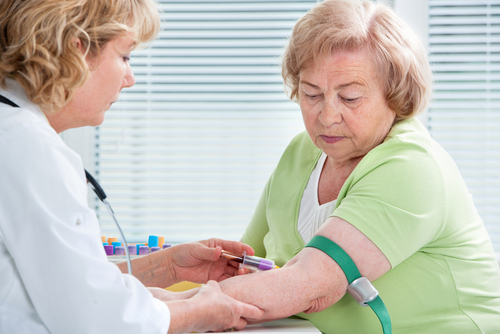Today there are many advances in medical tests that are helpful in discovering potential life-threatening diseases early. Often this means the disease process can be reversed or controlled and lead to better health as we age, as well as longer lives.
However, remember that the more invasive the test, the higher the risk from the test itself. Keep up with annual visits to your doctor. If it is difficult for you to do this without help, the best senior care agencies also include transporting and accompanying the senior to his or her appointments. These are 11 tests you should have done.

1. Blood Pressure. Your blood pressure should be checked at least yearly. Elevated blood pressure, called hypertension, is not uncommon but should not be ignored. There are a number of medications that can keep your blood pressure in the safe range.
Hypertension is often called the “silent killer” because often there are no symptoms that your blood pressure is in the dangerous level. High blood pressure increases your risk of strokes and heart attacks. You or your senior home caregiver can monitor your blood pressure easily if you have your own blood pressure monitor.

2. Blood Test for Cholesterol. High cholesterol and triglycerides levels can increase the risk of coronary artery disease. The coronary arteries supply blood to the heart so it can pump more efficiently. If a coronary artery is blocked, the result is a heart attack. High cholesterol can sometimes be treated by changes in diet but it frequently requires medication.
3. Blood Test for Blood Sugar. This test can be done at the same time as the test for cholesterol. A fasting blood sugar test will tell your doctor what the level of sugar is at the time your blood sample was acquired. An A1C will tell your doctor what your blood sugar level is over time. If your levels are high, you will be encouraged to change your diet and decrease the amount of sugar you take in each day. Elevated blood sugar and A1C are signs of diabetes. A healthy diet and weight control can help reverse this process but, if that is not enough, there are medications that can be prescribed.
4. Thyroid Stimulating Hormone Blood Test. This test can be done at the same time as above. Thyroid stimulating hormone, TSH, regulates your rate of metabolism. Low levels can result in sluggishness, weight gain, and muscle aches.
5. Bone Density Scan. This is a simple test done with an x-ray to measure bone mass. It is recommended that this test be done at age 65 and regularly after that. Your bone mass is an indication of bone strength, and people with low bone mass, osteoporosis, are at higher risk of bone fractures. This can be treated with medications.
6. Skin Check. You should check your body regularly for any changes in moles you already have, any new moles, or skin blemishes that seem unusual. If you have difficulty checking your skin, especially on your back, your senior home caregivers can check when giving care. See a dermatologist yearly for a complete skin check. Five million people a year are treated for skin cancer in the U.S. The key is early discovery and treatment.
7. Hearing Test. Hearing loss as we age is inevitable, and you should have an audiogram every two to three years. It will test both the intensity of sound needed for you to hear and also the pitch. Often hearing loss is only at a certain pitch, so you can hear some people perfectly with no effort, but with others you can barely understand a word. This can be related to the pitch of their speaking voice. Hearing loss can be treated.

8. Vision Test. Vision can also be affected by age. A regular exam is important for seniors to correct vision problems and also to check for cataracts and glaucoma, which can result in vision loss.
9. Mammogram. This is a screening for breast cancer. There is some disagreement in the medical profession about how often mammograms should be given to senior women. Currently, most doctors recommend every year or every two years. The decision can be influenced by family history and other risk factors. Women should continue their breast self-exam throughout their life. Men can also get breast cancer, although it is much less frequent.
10. Prostate Exam. Men will start routine prostate exams annually at about age 50, and earlier if they are at high risk or have a family history of prostate cancer. A simple blood test that measures the prostate-specific antigen (PSA) levels in the blood can also be given.
11. Colorectal Exam. This is a test to detect colon cancer, which is highly treatable when caught early. The test of choice has been a colonoscopy. However, there is some controversy about using this test, especially for seniors. The test itself is not without risk. It requires sedation and involves the doctor inserting a tube with a light and camera in it, through the length of your colon. There is also a tool for taking biopsies enclosed in the tube to use for the removal of any polyps. Some doctors feel the risks out-weigh the benefits unless the person is at high risk or is having symptoms such as rectal bleeding.
There is an alternative non-invasive test also available for any people who need a routine check and have none of the risk factors. You simply collect a stool sample and send it to the lab for testing. The test is reported to detect over 90% of colon cancers.
Talk to your doctor when a test is recommended. Make sure you understand the need for the test, how the test is done, and what the risks are. Ask if an alternative test is available if you are not comfortable. Remember that early detection is the key to keeping small problems from becoming large ones.

